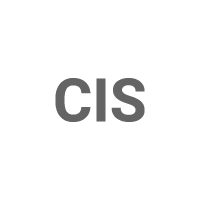


The Center for Internet Security (CIS) has a set of 20 prioritized Controls targeting the most frequent cyberattacks. The ‘CIS 20’ are organized into implementation groups (IGs), which allow entities to use a risk assessment to determine the appropriate level IG.
CIS Controls provide global cybersecurity standards and are mapped to, and referenced by, multiple legal, regulatory, and policy frameworks. The latest CIS Controls version, v8, keeps up with a changing IT landscape: cloud-based computing, virtualization, mobility, outsourcing, work-from-home, and evolving cybercriminal tactics. Although organizations seeking CIS certification would have to implement most or all the CIS 20, still, implementing just the first five will eliminate more than 80% of IT risk for most organizations.
In 2024, the benchmarks listed below have been revised and enhanced:
Construction Industry Scheme (CIS). Beginning April 6, 2024, UK subcontractors must demonstrate compliance with VAT obligations to maintain their gross payment status.
The SureShield platform simplifies CIS compliance by automating technical controls and guiding you through operational controls. SureShield’s automation will reduce your overall CIS compliance cost by up to 70% when compared to traditional, labor-intensive compliance methods. For organizations requiring compliance to multiple frameworks, crosswalk automation drives cost savings up toward 90%.


CIS safeguards vital IT systems such as operating systems and networks.

CIS strengthens vulnerability protection, reducing the chance of serious cybersecurity incidents.

CIS prepares organizations for reasonable, appropriate, and acceptable and audit compliance.
CIS is one of the most respected security frameworks and is recognized as a worldwide standard, along with NIST CSF. CIS and NIST are similar in that they are robust, flexible frameworks providing guidance and direction for managing an organization’s entire cybersecurity strategy. The difference between the two is nuanced; CIS tends to be more prescriptive, whereas NIST is more flexible.
CIS Controls were developed for today’s multi-framework era. They are used by organizations of all sizes around the world to achieve the goals and objectives described by multiple legal, regulatory, and policy frameworks. CIS Controls map against various computing platforms such as AWS, Azure, and many more. The CIS’s mission is to make the connected world a safer place for people, businesses, and governments through its core competencies of collaboration and innovation. Simply put, CIS helps organizations reduce hacking risk.
CIS Benchmark Profiles
A level 1 profile is generally assigned to surface-level recommendations that can be quickly implemented. Organizations can generally continue normal operations when introducing recommendations of this level.
Level 2 profiles are linked to recommendations that deal with areas of significant importance to IT systems and cybersecurity. These recommendations will cover policies and parts of IT systems that are vital to cybersecurity.
Activate CIS framework
Install scanner for compliance evidence gathering
Review baseline evidence to score compliance control status
Close compliance gaps
Ongoing compliance and gap surveillance
Enforced maintenance of compliance readiness

Do you need help assessing your compliance readiness? Learn how our automated crosswalk technology will dramatically reduce your labor requirements. Schedule your free consulting session, up to 1 hour.